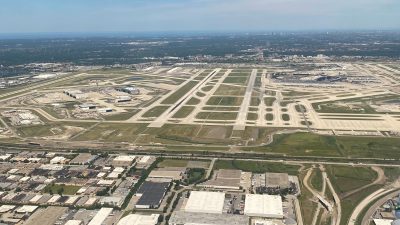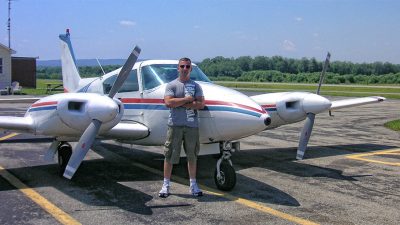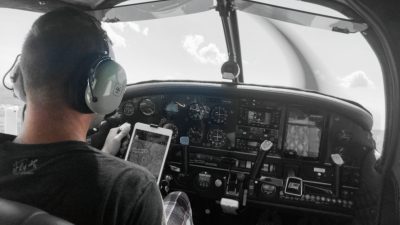If you’re interested in flying, one of the first choices you’ll face is whether to pursue a Sport Pilot License (SPL) or a Private Pilot License (PPL). Each has its own benefits, limitations, and requirements. Below, we’ll break down the key differences to help you decide which is best for your goals.
Training Hours and Costs
One of the main differences between these licenses is the number of flight hours required by the FAA:
Sport Pilot License (SPL)
Minimum under Part 61: 20 hours total flight time
At least 15 hours dual instruction
5 hours solo flight
2 hours cross-country dual instruction
10 takeoffs/landings to a full stop at an airport
One solo cross-country flight of at least 75 nautical miles, with full-stop landings at two airports, and one leg of at least 25 nautical miles
Part 141 programs: Same as Part 61 minimums, though structured differently
Private Pilot License (PPL)
Part 61 minimum: 40 hours total flight time
At least 20 hours dual instruction
10 hours solo flight
3 hours cross-country dual instruction
3 hours night training (including 10 full-stop landings)
3 hours instrument training
Solo cross-country of at least 150 nautical miles with landings at three airports
Part 141 minimum: 35 hours with an FAA-approved training syllabus
Typical Real-World Averages
SPL: While the legal minimum is 20 hours, many students need closer to 30–40 hours to be proficient.
PPL: Most Part 61 students finish in 60–70 hours; Part 141 programs can be slightly lower if training is frequent and structured.
Because the SPL requires fewer hours and uses simpler, more fuel-efficient aircraft, it is generally the lower-cost option. However, training frequency matters—flying 2–3 times a week helps you stay close to the minimum hours.
Comparing the Sport and Private Pilot Licenses
Below is a side-by-side comparison of the privileges and limitations of each license:
| Aspect | Sport Pilot License | Private Pilot License |
|---|---|---|
| Minimum Flight Hours | 20 hrs | 40 hrs (35 under Part 141) |
| Aircraft | Light Sport Aircraft (LSA) only — max 1,320 lbs, 2 seats | Any non-complex, non-high-performance aircraft up to 12,500 lbs; endorsements allow more types |
| Passengers | 1 passenger maximum | More than 1 passenger (up to aircraft capacity) |
| Night Flying | Not permitted | Permitted with night training |
| Airspace Access | Class E & G; Class B, C, D only with instructor endorsement | All controlled airspace below Class A (IFR rating required for Class A) |
| Weather | Day VFR only | VFR; IFR allowed with instrument rating |
| Medical Requirements | Valid U.S. driver’s license (self-certification) or FAA medical | FAA medical (3rd class or higher) or BasicMed (if eligible) |
| International Travel | U.S. airspace only | International flights allowed (check destination rules) |
| Retractable Gear | Not allowed | Allowed with training/endorsement |
Aircraft Options
When considering which license to pursue, it’s helpful to know what types of aircraft you’ll be able to fly:

Sport Pilot License:
You’re limited to Light Sport Aircraft—simple, lightweight, and easy to fly. Examples include:
Czech SportCruiser
Flight Design CTLS
ICON A5

Private Pilot License:
Far more flexible—you can fly most general aviation aircraft, like:
Cessna 172
Piper Cherokee
Cirrus SR20
With additional training, you can fly complex, high-performance, tailwheel, and even multi-engine aircraft.
Night and Weather Limitations
Sport Pilot License: Only daytime flying under Visual Flight Rules (VFR)—clear weather, good visibility. No night operations.
Private Pilot License: Night flying is allowed after completing required night training. You can also add an Instrument Rating, enabling flight in clouds and low visibility under IFR.
Airspace and Cross-Country Rules
SPL: You can operate in Class E and G without restriction, but entry into Class B, C, or D requires an instructor endorsement for each airspace type. Cross-country flying is allowed but limited to U.S. airspace only.
PPL: You can access all controlled airspace below Class A, and fly internationally with proper planning, documentation, and permissions.
Medical Requirements
SPL: You may fly using a valid U.S. driver’s license as your medical certificate—provided you meet FAA self-certification standards and have no known medical condition that would make you unsafe to fly. You may also use an FAA medical if you choose.
PPL: You must initially obtain at least a third-class FAA medical certificate. Later, you may qualify to fly under BasicMed, if you meet eligibility requirements.
Which License Is Right for You?
Choose the SPL if:
You want a lower-cost, simpler entry into aviation, and plan to fly locally, in the daytime, in fair weather, with only one passenger.Choose the PPL if:
You want the most flexibility—more passengers, more aircraft types, night flying, cross-country trips, and the option to advance to instrument, commercial, or instructor ratings.
✈ Next Step:
Ready to start flight training? Find a school near you in our Flight School Directory.



